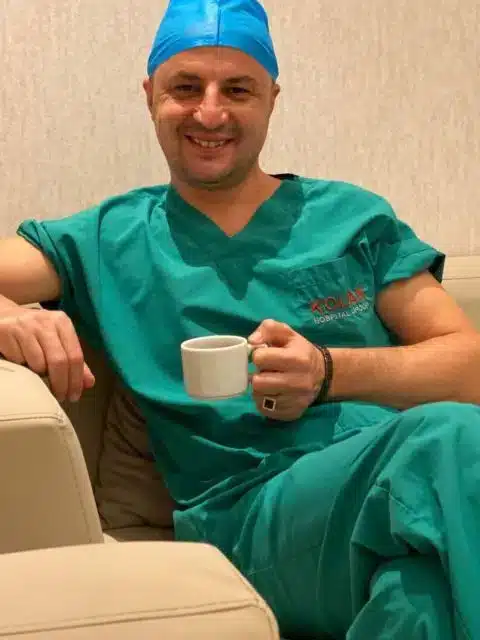Conservative, that is, non-surgical treatment methods of scoliosis in patients can belong under two main groups.
The first of these is physical therapy exercises and the other is corset treatment.
As with all types of scoliosis, the decision for these treatments is made according to the size of the curvature and the patient’s age, that is, the growth potential thereafter.
In other words, there is a huge difference in terms of follow-up and treatment between 10 and 20-year-old patients with a 30-degree curvature.
As classical knowledge, conservative treatment methods of scoliosis should be applied in patients with growth potential and curvature of more than 20 degrees.
Physical Therapy Exercises
Schroth Therapy
These are three-dimensional exercises specially adapted for adolescent idiopathic scoliosis (adolescent scoliosis of unknown cause).
After being developed firstly in Germany, it has been widely applied all over the world.
It is practiced by physiotherapists trained in this subject.
The aim of the scoliosis exercises in the Schroth technique is to eliminate the asymmetries caused by the scoliosis and to ensure that the patient recovers cosmetically and adapts to daily life more easily.
3D Scoliosis Exercises, which is a German ecole, has been specially adapted for people with idiopathic (unknown cause) spinal curvatures during adolescence.
The Schroth exercise is a conservative treatment method applied by extending the torso, correcting body imbalances and using a special breathing technique.
The special breathing technique is used to change the shape of the rib cage affected by scoliosis and is the most important building block of the Schroth method. The breathing technique is individually taught by the physiotherapist according to the shape and direction of the curvature.
Schroth therapy has many basic principles. It can be characterized as the first step of conservative treatment.
It can be combined with the use of corsets to make the exercises more efficient and improve the result.
Corset Therapy
The purpose of the use of corsets in children with a curvature of more than 20 degrees and growth potential is to prevent the progression of scoliosis during the growth period.
The aim here is not to completely correct the scoliosis, but, to stop the progression of the curvature first, and if possible, to recover it.
The key point in this improvement is that the child continues to grow.
Scoliosis corset corrects curvature based on the three-point principle.
Ideally, the child is expected to wear the corset 23 hours a day. Access to this stage is done gradually. A measurement is taken by an orthotic technician, the corset is prepared, and after the initial evaluation by the physician, a radiograph with the corset is taken to confirm the condition of the scoliosis in the corset. At this stage, if necessary, changes are made on the corset to achieve the maximum corrective effect. After this stage, starting from 6 hours a day, the use of the corset is increased up to 23 hours a day within 3 weeks.
The essential factor in corset treatment is patient compliance. It is difficult to spend 23 hours in a corset that forces the torso to stay in a certain position. At this point, the support of the family and the motivation of the child are very important in the process of getting used to the corset.
The success rate is higher in lower-angle curvatures, in patients with high compliance, in those who start early treatment, and in cases where the corset fits the body very well.
One of the most important problems of corset use is pressure wounds. In order to minimize this, it is necessary to wear a seamless, thin, cotton T-shirt under the corset, to observe the whole torso in terms of these wounds in the 1 hour that is interrupted, and to make some changes in the corset, if necessary, under the supervision of a physician. T-shirts that are worn inside should be changed daily, bathing should be done daily and the corset should be cleaned frequently.
Corset treatment is a dynamic treatment. As the child grows taller or the shape of the curvature changes, the corset needs to be changed to adapt to the new position.
There are many corsets with different names for treatment purposes.
Recently, flexible corsets that allow the movement of the spine, based on X-ray and examination findings, prepared with specific computer software are used. Patient compliance is also quite high in these dynamic corsets.
















